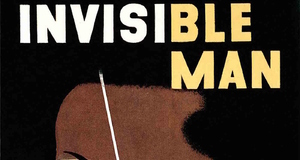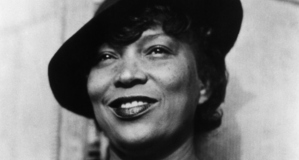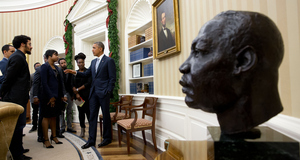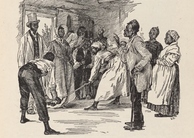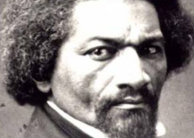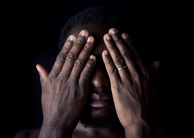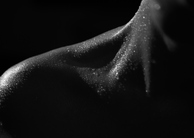Racial Uplift: Acculturation to the Dominant Culture in Contending Forces by Pauline E. Hopkins
By
2011, Vol. 3 No. 10 | pg. 1/2 | »
KEYWORDS:
Domestic fiction reigned in women’s literature during the nineteenth-century. These narratives defined ”True Womanhood,” where the female exemplified four pillars: piety, purity, domesticity, and submissiveness. They are meant to reject the public sphere for more spiritual gains: true women were the moral compasses of society. Their influence in the home was supposed to project outward into society because of the true woman’s role as a wife, a mother, and a teacher. Amy Kaplan, in her work “Manifest Domesticity,” denotes that the “private feminized space of the home both infused and bolstered the public male arena” (581). Now this is, of course, representative of the dominant ideologies of society during the nineteenth century, which was very much a white discourse. Notions of “True Womanhood” represented the realm of the middle class white woman, and any racialized tensions of womanhood were completely ignored. This is not to say that the African American woman had no role in the construction of her own womanhood, only that she was oppressed and silenced. Around the turn of the twentieth century, Pauline E. Hopkins regained the black woman’s voice in the nineteenth century cultural dialogue, and began to define her womanhood through the exposure of oppression of the dominant white ideology. Hopkins exposes the hypocrisy of female sensibility as a movement that “could violently reinforce the very racial and class hierarchies” that it claims to dissolute (Kaplan 581). In Hopkins’s novel Contending Forces: A Romance Illustrative of Negro Life North and South, domestic discourse is subverted through giving the black women agency and voice underneath the umbrella of “True Womanhood.” But how much agency really exists within a realm created by the dominant ideologies that the political aspects of Hopkins’s narrative rages against? By establishing a hegemonic black community, Hopkins juxtaposes this image of an educated black elite not only with its white counterparts, but also against the lower classes within their own race. In creating racially charged and class-stratified commonalities that exist as two extremes, Hopkins reveals the blaring similarities between the middle class black family and the white one. It is the contradictory diametric of their blatant rejection of whiteness paired with their social and political acculturation into the white infrastructure that ultimately unveils the hypocrisy of a black aristocracy that aggressively demands distinctness from, but also equality with, the dominant culture, proving it is merely a reflection of a racialized society in a murky pond.Hopkins prefaces her domestic fiction in order to clarify that she was “not actuated by a desire for notoriety or for profit,” but instead “to raise the stigma of degradation” from her race (Contending Forces 13). It cannot be argued that the political undertones interwoven throughout the domestic narrative shape the theme of racial uplift. However, this theme sometimes becomes convoluted because of two competing ideologies. It should be considered that Hopkins was writing during a time when there was a giant schism between white and black credos, something which she understood. In trying to appeal to both sides, “she developed a self-contradictory narrator—omniscient but unreliable—whose moral judgments are shaded according to the complexion of the audience” (Cassidy 661). By placing the defense of her race into position with declarations such as, “Surely the Negro race must be productive of some valuable specimens, if only from the infusion which amalgamation with a superior race must eventually bring,” Hopkins compartmentalizes racial ideologies, and through her use of a masked double voice creates tension between the two (Contending Forces 87). The use of “if only” before the second statement portrays this undercut sarcasm, subtly stabbing at the issue of the mulatto race, which arose from rape of black women by white men. However, even with a masked double voice and her appeal for racial uplift, the constructs in which her characters exist reaffirm a compliance with the dominant system that undermines Hopkins’s masked double voice, something Thomas Cassidy, in his paper “Contending Contexts: Pauline Hopkins’s Contending Forces,” defines as “masked use of masking—her doubly masked double-voicedness” (661). A very delicately maneuvered subject in the novel is the racial heritage of the endowed black elite, namely Sappho Clark, Will Smith, John Langley, and Mrs. Willis. Hopkins focuses on a small detail of racial identification with Will Smith’s hair that had “just a tinge of crispness to denote the existence of Negro blood,” and then declares that John Langley “possessed features of the Caucasian cut” (CF 90). Later on, when Mrs. Willis is introduced, Hopkins quite abruptly mentions, “a strain of white blood had filtered through the African stream” (145). Sappho Clark’s heritage is the central mystery in the novel, but even without blatant tangents about her heritage, it is suggested, and then revealed, that she is a mulatto. It cannot be ignored that Hopkins generated a muddled racial identity for these characters, and in doing so admits an entrapment within the constraints of a dominant culture. It also reflects the ambiguity of the author, who was “addressing two audiences of different expectations”; this ambiguity tends to lead to the notion “that the concept of separate races is an ambiguous, problematic one at best” (Cassidy 664). However, these contradictions reflect a larger societal fissure that permeates the academic world. The field of black feminist studies embodies these contradictions because of their existences within the dominant academic infrastructure. According to Hazel Carby, the field of “Black feminist criticism has its source and its primary motivation in academic legitimation, placement within a framework of bourgeois humanistic discourse” (Reconstructing Womanhood 15). Of course, the racial underpinnings of this humanistic discourse prevail, as the field “accepts the prevailing paradigms predominant in the academy…and seeks to organize itself as a discipline in the same way” (Carby 16). Hopkins positions these characters into contradictory characteristics that tug towards and pull against the white conversation. Mrs. Willis embodies this tension between a subversion of white society, and an acculturation to it, not only because of her “strain of white blood,” but because she took into her bosom “the great cause of the evolution of true womanhood in the work of the ‘Woman Question’” (CF 146). Her emanation on these themes of marital bliss and suffrage found solace in a humanitarian “who sought to use her talents as an attraction for a worthy charitable object, the discovery of a rare species of versatility in the Negro character” (CF 147). Sean McCann points out that some readers feel ambivalence toward the melodramatic and sentimental undercurrents of the novel; some would say, “that these structures themselves constituted a check on the writer’s development as a social thinker” and that Hopkins was prescribing to “the constraints of racism and sexism” that she sought to reject (McCann 790). McCann rebuts this claim, and instead suggests that the genre of melodrama allowed Hopkins “to investigate, to doubt, and ultimately to reassert the notion of race itself” (791). He goes on to extract the excerpt of Mrs. Willis and the sewing circle dialogue, and indicates that Mrs. Willis, who is viewed as a political activist for her race and her gender, insists that “One must cultivate the bourgeois virtues in oneself so that they may be genetically passed to one’s children” (McCann 794). So, while McCann is attempting to oppose criticisms of Hopkins that allude to an entrapment within the dominant ideologies, his illumination of Mrs. Willis’s function in the novel asserts otherwise. If racial uplift for this black elitist woman is defined by “training” the black community, then her metaphor is no different than Will Smith’s tirade as he exclaims the “characteristic traits of the master will be found in his dog,” when describing the relationship between the black man and the white one (Hopkins 272). While both these mouthpieces cry out for the progress of their race, they have both unknowingly acculturated in a deep-rooted, systemic way. They are the black bourgeois, who animalize the unfortunate and the uneducated. The book Black Literature in White America by Berndt Ostendorf pronounces the “history of blacks in America has too often been treated as a progress report in acculturation” (7). Ostendorf’s touches on a more modern notion of “ethnification” that has taken place in American culture, and that the roles of imitation have been reversed. However, it should be stressed that this a modern notion, and that the racialized social sphere of the nineteenth-century was one of assimilation. Ostendorf’s research is useful to me because he historically surveys black literature, and does acknowledge, “Failure on the part of the have-nots to fall in line with the dominant cultural trend has been interpreted as a sign of inferiority” (2). Hopkins’s sentimental account reflects the outside societal pressures of aligning with the dominant ideology in order to be seen and treated as equals in literary or any academic endeavors. This unmasks the reasoning behind the de-ethnification of Hopkins’s protagonists and political and social mouthpieces. I have already alighted that there is a hereditary whitening of Hopkins’s main characters, which, because their complexion enabled them an education, were able to become the black bourgeois, creating a stratification of class within their community. Hopkins’s vigorously juxtaposes her political and social activists against the poor, uneducated masses of the black community. Dialect is the most blaring distinguisher of class in Contending Forces, the mark of education and bourgeois virtues are bore into their voices. In a juxtaposition to expose the whiteness of the elite, Hopkins deviates from her main narrator in Chapter X with the tangent of Mrs. Jackson who raves against “white-folksey” black people who “never come ‘roun’ people that they don’t hold on a ‘quality with theirselves” (186). Once again, there is evidence of an overt message, as well as a repressed one. Through Mrs. Jackson’s ethnic dialectic, which is starkly contrasted to the elevated diction of her main protagonists, class infrastructures are reinforced, as well as the notion that the black community needs to be “cultivated” in order for progress. But underneath that, there is a current of contempt for this notion. This fairly insignificant, uncultivated black woman exposes one of the biggest hypocrisies of Hopkins’s claim to raise her race from degradation, in that in order for progress, there has to be some acceptance of whiteness as the dominant cultural tradition, and some level of acculturation has to take place in order to be considered equal.Continued on Next Page » Suggested Reading from Inquiries Journal
Inquiries Journal provides undergraduate and graduate students around the world a platform for the wide dissemination of academic work over a range of core disciplines. Representing the work of students from hundreds of institutions around the globe, Inquiries Journal's large database of academic articles is completely free. Learn more | Blog | Submit Latest in African-American Studies |








